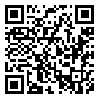Volume 24, Issue 3 (12-2022)
yafte 2022, 24(3): 81-91 |
Back to browse issues page
Download citation:
BibTeX | RIS | EndNote | Medlars | ProCite | Reference Manager | RefWorks
Send citation to:



BibTeX | RIS | EndNote | Medlars | ProCite | Reference Manager | RefWorks
Send citation to:
Moghadasi A. Investigation of Bilateral Asymmetric Isometric Strength of Knee Muscles in Iranian Women with Multiple Sclerosis. yafte 2022; 24 (3) :81-91
URL: http://yafte.lums.ac.ir/article-1-3548-en.html
URL: http://yafte.lums.ac.ir/article-1-3548-en.html
Department of Sports Injury and Corrective Exercises, Payame Noor University, Tehran, Iran
Abstract: (1288 Views)
Background: Multiple sclerosis (MS) causes an asymmetric pattern in the strength of the muscles on both sides of the body. So far, the amount of asymmetry in the isometric strength of knee muscles in Iranian women with MS has not been studied. Therefore, this study aimed to investigate the extent of bilateral asymmetry in the isometric strength of knee flexor and extensor muscles in Iranian women with MS.
Materials and Methods: This is a causal-comparative study. From 93 MS patients, 27 females (20-50 years with an expanded disability status scale of less than 4) were selected as the statistical sample. Maximal voluntary isometric contraction (MVIC) of the knee flexor and extensor muscles was measured at the angles of 20 and 70 degrees using a Biodex isokinetic dynamometer. The asymmetric score in muscle strength was also calculated as a percentage of the ratio between the peak torque isometric strength in the muscles of the weak leg to the strong one. The data were analyzed using the correlated t-test at the 95% confidence level.
Results: The results showed a significant difference in MVIC of the knee extensor and flexor muscles between the strong and the weak leg at the angles of 20 and 70 degrees in the statistical sample of the present study (P=0.001). Additionally, in terms of asymmetry in strength, the results showed that the highest percentage of bilateral asymmetry between strong and weak legs was in the strength of knee extensor muscle at the angle of 20 degrees (31.2%), and the lowest percentage was in knee flexor muscles at 70 degrees (16.1%).
Conclusion: The results of this study showed that the asymmetric rate in the strength of flexor and extensor muscles of the strong and weak leg is about 16% to 31% in Iranian women with MS with an expanded disability status scale of less than 4.
Materials and Methods: This is a causal-comparative study. From 93 MS patients, 27 females (20-50 years with an expanded disability status scale of less than 4) were selected as the statistical sample. Maximal voluntary isometric contraction (MVIC) of the knee flexor and extensor muscles was measured at the angles of 20 and 70 degrees using a Biodex isokinetic dynamometer. The asymmetric score in muscle strength was also calculated as a percentage of the ratio between the peak torque isometric strength in the muscles of the weak leg to the strong one. The data were analyzed using the correlated t-test at the 95% confidence level.
Results: The results showed a significant difference in MVIC of the knee extensor and flexor muscles between the strong and the weak leg at the angles of 20 and 70 degrees in the statistical sample of the present study (P=0.001). Additionally, in terms of asymmetry in strength, the results showed that the highest percentage of bilateral asymmetry between strong and weak legs was in the strength of knee extensor muscle at the angle of 20 degrees (31.2%), and the lowest percentage was in knee flexor muscles at 70 degrees (16.1%).
Conclusion: The results of this study showed that the asymmetric rate in the strength of flexor and extensor muscles of the strong and weak leg is about 16% to 31% in Iranian women with MS with an expanded disability status scale of less than 4.
Type of Study: Research |
Subject:
داخلی
Received: 2022/08/26 | Accepted: 2022/12/20 | Published: 2022/12/31
Received: 2022/08/26 | Accepted: 2022/12/20 | Published: 2022/12/31
Send email to the article author
| Rights and permissions | |
 |
This work is licensed under a Creative Commons Attribution-NonCommercial 4.0 International License. |







